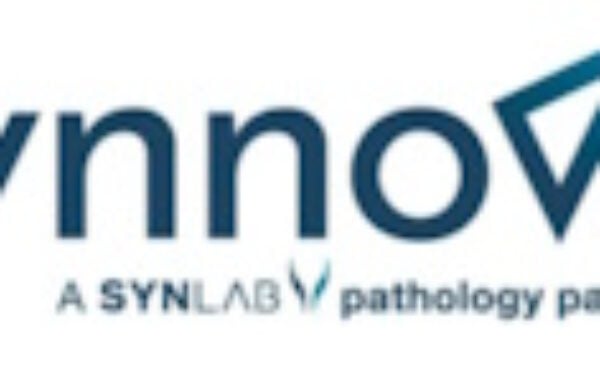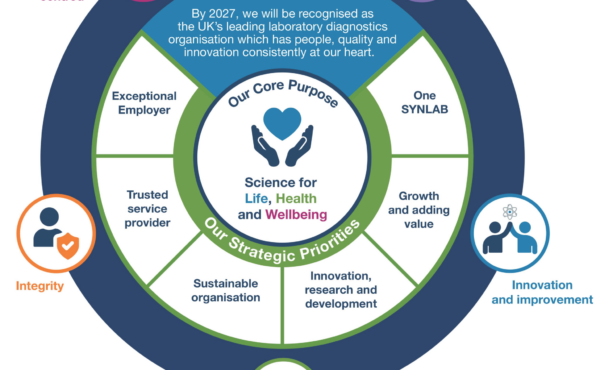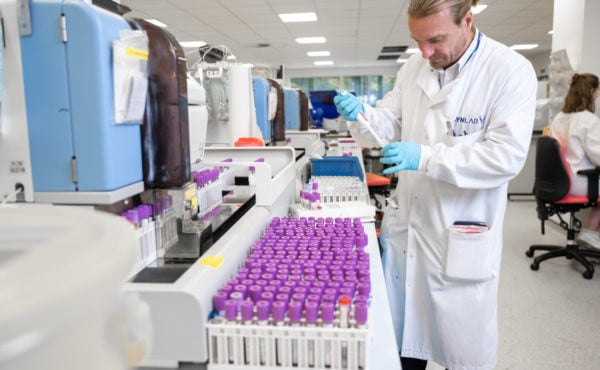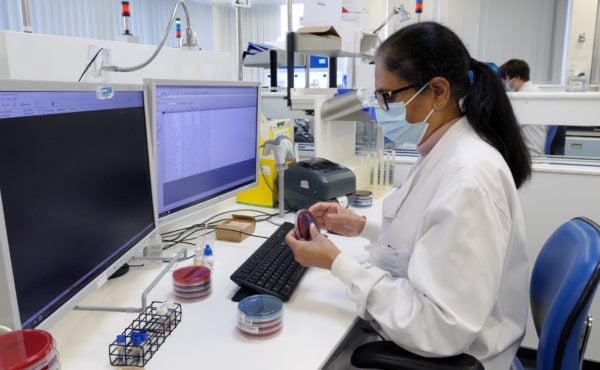Published: 6th April 2019
Introduction
Following the introduction of the Gender Pay Gap (‘GPG’) Transparency Regulations in 2017, SYNLAB UK & Ireland is pleased to provide their second report. Only one of our legal entities meets the large employer criteria; the data included within this report relates only to IPP Analytics Limited.
Our company is meritocratic, so men and women with the same performance and experience in equivalent roles are paid equally, in roles underpinned by job evaluation and banding frameworks.
We have a median gender pay gap of 7.4%, this is slightly higher than last year (6.5%). The change reflects the slight decrease in the proportion of women within our upper and upper middle quartiles which may be due to a move away from working at unsocial hours which attracts a pay premium. The gender profile of our staffing has adjusted slightly from 77% female to 74% which may also have contributed to the slight increase in the gender pay gap.
Within the reference period, however, 67% of
internal promotions were made to women which suggests a strong pipeline for
future years.
We also continue to compare favourably to the national median pay gap of 17.9% (1).
We remain committed to the principles of diversity and inclusion, which we believe is a key enabler for both our people and business to perform better. One element of that commitment is transparency around our gender pay gap, the reasons identified and being clear about the how we hope to address the issue.
An action plan has been developed in response to this year’s Gender Pay Gap report and I look forward to seeing how such actions close the gap in coming years.

Arnaud Gueny
Chief Executive Officer
SYNLAB UK & Ireland
(1) According to the Office for National Statistics (ONS) figures, the national median pay gap for all employees is 17.9% in April 2018
Data summary
| Women’s hourly rate is… | 12.67% lower (mean) | 7.37% lower (median) |
| Women’s bonus rate is… | 6.10% lower (mean) | 5.33% lower (median) |
| Who received bonus pay | 5.08% women | 7.14% men |
Pay quartiles – How many men and women are in each quarter of our payroll
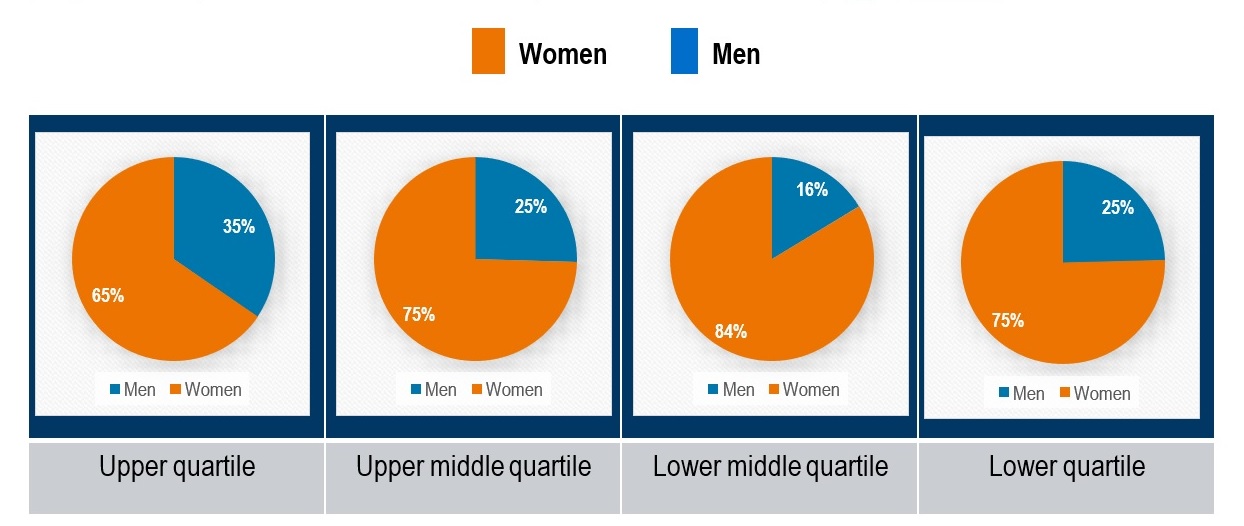
Understanding our Gap
Hourly rate
- The mean (average) hourly rate for women is £13.10 (11.8% higher than last year). For men, the mean hourly rate is £15.00 (12.3% higher than last year).
- The median (middle) hourly rate for women is £10.30 (8.4% higher than last year) whereas for men, the median hourly rate is £11.12 (9.5% higher than last year).
- 74.77% of our workforce is female. Women account for 65.45% of the work force in the upper quartile, which is ahead of the UK national average(2) (39.18%), which is one of the reasons why we believe our pay gap differential is better than the national position
Bonus pay
- A total of 24 people were in receipt of a bonus during the reference period (May 2017 – April 2018). This equates to 5.08% of women and 7.14% of men in receipt of a bonus.
- Bonus payments are made either as an incentive to join the company (19 people), on promotion to key roles as a retention payment (1 person) or on a limited, discretionary basis for performance (4 people).
- The average bonus payment made to women was 6.10% lower than that received by men. The median bonus received by women was 5.33% lower than men. This may be explained to a change in the joining bonus scheme from staged payments to one lump sum.
Pay quartiles
- The key to our gender pay gap appears to relate to the percentage of women within the upper quartile pay category, which is lower than our workforce gender percentage.
- Further analysis is required to trace the career paths of both men and women in the upper quartile since our first report to understand how this is impacting our gender pay gap.
- With above company average representation of women in the lower and lower middle quartiles, we will seek to ensure there are accessible career pathways to retain staff within the organisation and work towards each quartile more closely reflecting the overall workforce.
(2) According to the Gender Pay Gap Service Gov.UK (2017-18)
Taking Action
1. Analysis, transparency and reporting
- Following the publication of our first gender pay report last year we have commenced analysing our workforce data to understand what causes gender pay differences in our organisation.
- Key areas of focus for this year will be:
- The reasons why there is a smaller percentage of women in the upper quartile when compared to the overall percentage of women within the workforce.
- The proportion of women in the upper middle and upper quartiles undertaking unsocial hours and earning the premiums associated with this
2. Recruitment into upper quartile positions
- To improve skills and recruitment decisions, we have introduced a new 2-day people management course which up to 120 managers from across its UK businesses are due to undertake in 2019.
- We are also implementing a new approach to statutory, mandatory and promoted development training for all staff in the UK, including offering training for awareness of unconscious bias. We will review the impact of this training during 2019 with a view to making it mandatory for all staff involved in recruitment and promotion decision making.
3. Flexible working & inclusive employment opportunities
- We are developing a new diversity and inclusion strategy during 2019.
- Last year we participated a Flexible Hiring champions pilot programme run by the CIPD, the professional body for HR. We are reviewing the learning and benefits which arose from this pilot to develop a more detailed action plan.
- We will be undertaking more detailed surveys of our workforce and their career development which will including understanding the differences in aspirations, needs and requirements of women and men within SYNLAB UK.
Our report for 2017-8 can be found here

